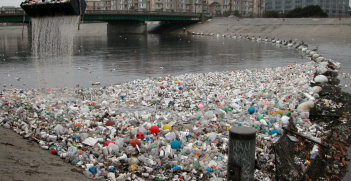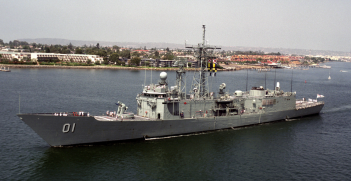Rethinking Australia’s Approach to Material Use and Value

Australia requires a new approach to improve material use.
Many decades of increasing affluence and expansion, with minimal impact of the Global Financial Crisis has meant that waste generation in Australia has grown, recycling rates have plateaued and China’s recent import restrictions have hit hard.
Australia faces some significant challenges and opportunities to maintain recycling rates, let alone shift to a more circular economy, and has to rethink its approach to material use and value.
As in many countries, China’s National Sword import restrictions have prompted reviews of many policies, strategies and programs. In Australia this has occurred at both state and national levels, with attention focused on packaging in particular. However Australian policy, programs and collaborations on waste and resource recovery are, in many respects several years behind those of leading nations in the EU, such as Germany and the Netherlands, which have been adopting an increasingly wide array of measures since the mid-1990s to reduce virgin resource consumption and lift recycling and reprocessing rates for both packaging and durable products.
In Australia the Federal Government has historically taken little responsibility for waste and recycling. Most of the responsibility for policies, legislation, financial and regulatory incentives sits with the states while responsibility for residential collections, and sorting facilities and landfills lies with local government and private companies.
Like many countries, Australia has only recently been mapping landfills and improving planning for resource infrastructure. Australia has made small steps to plan, facilitate and manage resource use, reuse and disposal as it does with water, transport and urban development.
Until recently, Australia’s major investments have largely focused on residential collections and sorting infrastructure. This approach has been both technical and capital intensive. Australia, through state and local government, has invested more than EU countries in public education campaigns around residential kerbside bins, litter prevention and public bin/disposal systems as there is a greater onus and responsibility placed upon the public than industry for litter, as is evident through EU policies and legislation.
Like many countries, Australia is coming to terms with the fact that its current systems and policies are not adequate for the twenty-first century and need to change. We are coming to realise that our strategies, contracts, pricing, systems and programs have prioritised cost, efficiency and volume of collection for export over quality and adding value for end products. For example, there are now serious conversations in state and local councils about how to move away from comingled kerbside recycling bin collections to distinct separate product collections, similar to systems in the Netherlands, Belgium or Wales. However, Australian governments at all levels have still a way to go in engaging with manufacturers, related industry groups and training institutions to develop policies, strategies, investments, skills, business models and collaborative projects for a more circular economy.
Furthermore, there are too few professional and intergovernmental links between Australia and its regional neighbours in the Pacific and Asia on manufacturing and reprocessing standards, levies, certification schemes, regulations and measures for a more circular economy and litter clean-up. By contrast, it is clear that the EU and Asia are increasing dialogues on measures to manage resource flows, standards and environmental impact. China’s import restrictions are supporting industry and government measures for higher reprocessing standards in Europe while simultaneously addressing China’s internal environmental problems of air and land pollution.
Australia’s annual review of plastics recycling shows that over the last decade Australia has become increasingly reliant and focused on easy bulk exports of plastics while letting local reprocessing languish. For example, while durable products such as garden furniture, hose, pipe and flooring account for 60% of plastics consumed each year in Australia, there are currently no government or industry strategies, collections or separate drop-off or programs dealing with durable plastic products in Australia. This is contrary to trends in the EU which has seen increased growth in local reprocessing over the last 5-10 years and the target announced in early 2018 for 10 million tonnes reprocessed in EU by 2025.
Australia and the region of Southeast Asia and the Pacific therefore face a number of structural, organisational and environmental issues. New policies, improved data, information, joint investments and collaboration on projects, changes to cost structures and systems, and shared skills and knowledge are part of the solution.
Helen Millicer is a Churchill Fellow, GAICD, Principal at One Planet Consulting, and Manager of Waste and Resource Recovery in the Victorian Government. She was Co-Chair of the EU Australia Leadership Forum’s Sectoral Policy Workshop on Circular Economy and Plastics.
This article was originally published in The EU and Australia: Towards a New Era, the official publication of the EU-Australia Leadership Forum 2018, which took place from 18-22 November. It is republished with permission.
The AIIA is part of the international consortium selected to deliver the EU-Australia Leadership Forum project, a three-year initiative funded by the EU. Click here for video highlights of the forum.





